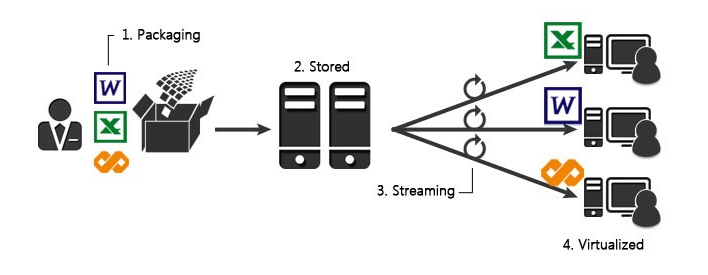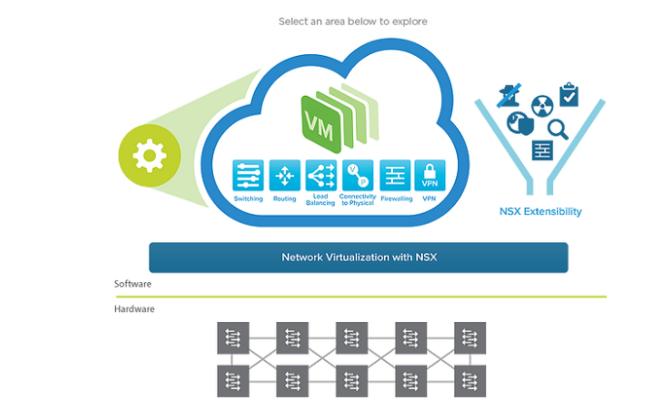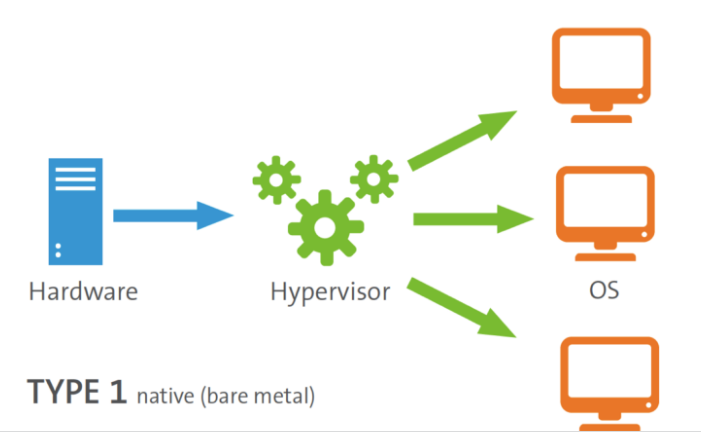MOD005714 Assignment Sample – 010 Element Case study – part 1 design 2023
Introduction
Computing facilities for the users are accomplished through the development of a perfect computing model. This will be implemented through the use of cloud computing services. The application of these services is enabled through the deployment of convenient, ubiquitous, and usage of “on-demand network”. There will be the formation of rapid provisioning for providing proper interaction within the server and client architecture.
In this report, there will be proper estimation for the facilities that will be provided to “Crypto File Logic” through cloud computing for decreasing the software complexity level. The attempts are made by this organization for enhancing the data encryption services for securing the data for users through th development of quality for cloud infrastructure.
For meeting this purpose, there will be the development of recommendations for different approaches that could be considered to overcome the present complexities for this sector.
Business overview
“Crypto File Logic” deals in the delivery of encryption services for securing the PII data for different governmental organizations through the implementation of blockchain technology.
Standalone servers are deployed for the minimum computation of storage devices, networks, and systems at their datacenters (Velkova, 2019). Presently, there has been a presence of in-house applications that must be expanded to reduce the complexity level of software through application development.
Challenges
Focusing on the case scenario, it could be analyzed that there must be a proper enhancement for block chain services in order to meet the monumental growth. Presently, there has been only a proper coverage of consumers’ current demand of 10% (Rossiter, 2017). Therefore, there is a requirement for developing the applications through the continuous installation of software updates.
The complexities are faced for having less technical staff for managing the cloud data and thereby using local servers for data handling. Also, there must be the presence of an upgraded version of the software that will increase the efficiency of cloud computing with suitable data encryption services.
With reference to these challenges and considering the requirements for CFL, there has been a proper migration made through the deployment of a suitable hypervisor, virtualization approach, and cloud solutions.
Migration
With reference to the requirements that are enlisted by CFL for enhancing the quality of cloud infrastructure, there has been the appropriate selection of appropriate cloud virtualization methods and data centers (Paščinski et al., 2018). Suggestions through recommendations are made for developing the encryption services with accurate data management.
Virtualization
Focusing on the challenges faced by CFL in the present scenario, the proper development of the application quality will be made through the deployment of network virtualization and application virtualization.

Figure 1: Application virtualization
(Source: https://devanshagarwal121.medium.com/virtualization-and-hypervisors-9c4c8f4ab27d)
Recommendations are made for using this virtualization for availing the following aspects.
- There will be proper storage space management for running the applications centrally.
- There will be a complete separation of applications through this approach from the OS and thereby availing thin clients, work stations, and laptops for running those separated applications (Bindhu and Joe, 2019).
- There will be an increase in the possibility of having multiple operations of application at a particular instant.

Figure 2: Network Virtualization
(Source: https://devanshagarwal121.medium.com/virtualization-and-hypervisors-9c4c8f4ab27d)
Through the implementation of this approach, the recommendations that might be made are as follows:
- There will be a complete splitting of channel bandwidths through the consideration of current network resources.
- There will be real-time management of data by providing independent data securing facilities and also increasing network accessibility through shared access for all.
- Block chain services will be enhanced for CFL through this approach by the application of enhanced network facilities having scalability, flexibility, reliability, and accurate network optimization (Vonderau, 2019).
- CFL will be able to reduce the network traffic through the implementation of “distributed channels” with this approach.
Hypervisor
For enabling numerous virtual machines, there needs to be a proper application of the hypervisor for increasing cloud efficiency through the allocation of relevant resources. Since there has been the presence of limited resources (staff), so, the usage of a proper hypervisor will help in increasing scalability through the decline in workloads through remote management.

Figure 3: Hypervisor
(Source: https://devanshagarwal121.medium.com/virtualization-and-hypervisors-9c4c8f4ab27d)
Recommendations are made for making use of Type-1 hypervisor for CFL due to the presence of the following aspects:
- The operations are unaffected through the detection of some problems within the main virtual machine. There will be the formation of no impact on other guest OS through the formation of changes in the main OS (Pages et al., 2017).
- This type of hypervisor will help in increasing the speed of operation for the network. This will help in the remote management of data on a large scale.
There might be the usage of Microsoft Hyper-V hypervisor by CFL for increasing the network speed effectively.
Data centers
Referring to the case scenario requirements, there must be the application of “colocation data centers” for increasing the space for renting the data facilities through 3rd parties. Through this approach, there will be the formation of infrastructure by hosting bandwidth, building, security, and cooling features. Also, there will be the acquisition of facilities by CFL through the management of firewalls, storage, and servers accordingly.
Virtual data centers and cloud
For the suitable management of infrastructure from a remote location and accomplishing functionalities for proprietary applications, there must be a proper increase in service reliability through cloud computing (Odun-Ayo and Agono, 2018). Therefore, CFL must deploy accurate cloud types that will be effective for handling the data for different clients remotely and at the same time.
Focusing on this perspective, there has been a proper usage of the hybrid cloud that will help in availing facilities for both private and public clouds accordingly. Through the application of the hybrid clouds, there will be the development of accurate load balancing facilities by making use of cloud bursting within the clouds (Dreibholz et al., 2019).
Due to the presence of facilities for application portability and data standardization, the hybrid cloud is recommended for increasing the cloud computing facilities and thereby helps in handling client data remotely. Also, hybrid clouds are cost-effective, scalable, flexible, and secure in handling numerous users at a single time.
CFL will benefit through the deployment of this cloud for handling loads during peak times and thereby help in maintaining the contract durations for different projects of governmental organizations.
Referring to the case scenario, the recommendations are made for the proper implementation of “Software-as-a-Service and Security-as-a-Service” as the most effective cloud computing models. Through the application of SaaS, there will be a remote supply of supply packages through the internet and there will be a complete deployment of a “utility-based pricing model” (Byrne et al., 2017).
There will be a complete inclusion of browsing, transaction, analytical and interactive facilities within the “application layer”. Customer interfaces for different end-users, software applications, and programs will be delivered through the implementation of SaaS by CFL.
Since CFL is majorly focused on the proper enhancement of the encryption facilities for securing the cloud data for the different government sectors, so the application of SeCAS will be appropriate for this purpose. This approach will help in the considerable reduction in the “security risks” through the proper implementation of user credentials.
The proper deployment of user credentials will be effective in the development of the data restriction to unauthorized users within a particular system.
Cloud infrastructure development
For the accurate increase in the cloud infrastructure quality, there must be the deployment of “Policy Ensured SLA”. Through the use of this policy, there will be developments of agreements between the user and client. This will help in the development of restrictions regarding teh usage of the different services for both CFL and traders accordingly.
In the future, there will be proper development of conditional terms for having control over the “runtime data”. This will be effective in reducing the development of unnecessary traffic at a particular instant of time. The implementation of the “LoM2HiS framework” will be effective in making transformations from low-level to high-level performance metrics.
Furthermore, in the future, there must be applications of distributed computing that will be productive for including private memory for individual processors. Through the accurate transfer of messages, there will be a proper transfer of information accordingly within processors.
Proper communication will be made for increasing the operation of the hierarchical structure of the cloud. CFL will be benefited from this form of computing through the development of immediate resolution strategies for different computation problems. Also, there will be an increase in network scalability and flexibility through the presence of independent operations for different nodes (hindawi.com).
Conclusion
To conclude, this report has helped in the proper enlistment of the requirements and challenges that are spotted by CFL accordingly. Based on these criteria, there has been a proper development of recommendations for increasing the operations for CFL in the future.
There has been a proper representation of new technologies that will help in managing the data flow within different servers and also manage the security aspects at a particular instant. So, these features will be profitable for increasing the reliability and flexibility for cloud operations through infrastructure development in the future accordingly.
Reference List
Journals
Bindhu, V. and Joe, M., 2019. Green cloud computing solution for operational cost efficiency and environmental impact reduction. Journal of ISMAC, 1(02), pp.120-128.
Byrne, J., Svorobej, S., Giannoutakis, K.M., Tzovaras, D., Byrne, P.J., Östberg, P.O., Gourinovitch, A. and Lynn, T., 2017, April. A review of cloud computing simulation platforms and related environments. In International Conference on Cloud Computing and Services Science (Vol. 2, pp. 679-691). SCITEPRESS.
Dreibholz, T., Mazumdar, S., Zahid, F., Taherkordi, A. and Gran, E.G., 2019, February. Mobile edge as part of the multi-cloud ecosystem: a performance study. In 2019 27th Euromicro International Conference on Parallel, Distributed and Network-Based Processing (PDP) (pp. 59-66). IEEE.
Odun-Ayo, I. and Agono, F., 2018. Cloud Management Optimization–Issues and Developments.
Pages, A., Serrano, R., Perelló, J. and Spadaro, S., 2017. On the benefits of resource disaggregation for virtual data centre provisioning in optical data centres. Computer Communications, 107, pp.60-74.
Paščinski, U., Trnkoczy, J., Stankovski, V., Cigale, M. and Gec, S., 2018. QoS-aware orchestration of network intensive software utilities within software defined data centres. Journal of Grid Computing, 16(1), pp.85-112.
Rossiter, N., 2017. FCJ-220 imperial infrastructures and Asia beyond Asia: data centres, state formation and the territoriality of logistical media. Fibreculture Journal, pp.1-20.
Velkova, J., 2019. Data centres as impermanent infrastructures. Culture machine.
Vonderau, A., 2019. Scaling the cloud: Making state and infrastructure in Sweden. Ethnos, 84(4), pp.698-718.
Websites
https://www.hindawi.com/journals/tswj/2014/894362/
Know more about UniqueSubmission’s other writing services:

